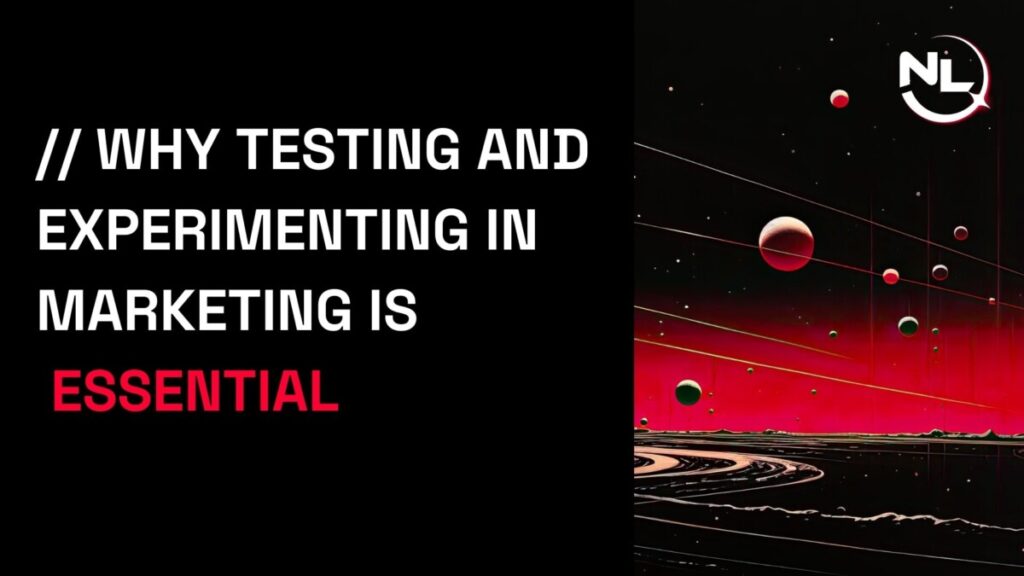In the fast-paced world of marketing, standing still is not an option. Testing and experimenting are crucial to discovering what works, optimizing performance, and staying ahead of the competition. In this blog, we’ll explore why experimentation matters, different ways to test your strategies, and how to analyze the results effectively in your reporting.
Why Test and Experiment?
Marketing is rarely one-size-fits-all. Audiences, platforms, and algorithms are constantly evolving. Testing allows you to:
• Identify What Works: Discover which strategies resonate with your audience.
• Optimize for ROI: Focus resources on tactics that drive results.
• Adapt to Trends: Stay ahead of competitors by experimenting with new platforms and content styles.
• Minimize Risk: Small-scale tests can save you from committing to ineffective strategies on a large scale.
Methods of Experimentation
1. A/B Testing
A/B testing is one of the most straightforward ways to experiment. It involves creating two versions of a single element, such as a headline, call-to-action, or image, and testing them against each other.
Example: In one campaign, adding a “Buy Now” call-to-action increased conversions from 10% to 20% of page impressions. This simple tweak doubled the effectiveness of the campaign.
How to Measure Success: Look at conversion rates, click-through rates (CTR), and engagement metrics to identify the winning version.
2. Exploring New Platforms
Trying new platforms like TikTok or Instagram Reels can help you reach untapped audiences. While these platforms might not directly generate phone calls or clicks, they can drive awareness, which often leads to an increase in organic searches and direct traffic.
Example: After running video ads on platforms like Hulu and Peacock, we noticed a rise in organic search traffic and direct website visits. While there wasn’t a direct tie to these ads, the timing aligned perfectly.
How to Measure Success: Use metrics like website traffic sources, organic search growth, and branded search volume.
3. Content Variation
Experimenting with content styles—videos, infographics, blogs, or interactive elements—can reveal what resonates most with your audience. For example, a company that relied heavily on blog posts might find that video tutorials drive more engagement.
How to Measure Success: Track metrics like time on page, shares, and bounce rates for different content types.
4. Testing Ad Copy and Creative
Even subtle differences in ad copy or creative elements can have a significant impact. For example, testing the tone of your messaging—formal vs. conversational—can help you refine your approach.
How to Measure Success: Evaluate CTR, impressions, and cost-per-conversion (CPC).
Analyzing Results in Your Reporting
Once your experiments are complete, reporting is key to making data-driven decisions. Here’s how to do it effectively:
• Focus on the Right Metrics: For top-funnel campaigns, prioritize CPM and impressions. For bottom-funnel campaigns, focus on phone calls, conversions, and ROI.
• Use Tools Strategically: Leverage tools like Google Analytics to track website traffic sources, branded search growth, and user behavior. Call tracking tools can connect phone inquiries to specific campaigns.
• Identify Patterns: Look for correlations between your tests and results. For example, if organic traffic spikes after running ads on Hulu, that’s a sign your awareness campaign is working—even if the connection isn’t direct.
• Iterate: Use your findings to refine your strategies and test again.
Conclusion
Testing and experimenting aren’t just optional—they’re essential to staying competitive in marketing. By trying new ideas, analyzing results, and continuously iterating, you can uncover the strategies that work best for your brand and your audience. Whether you’re tweaking ad copy or exploring new platforms, every experiment is a step toward better performance and higher ROI.



